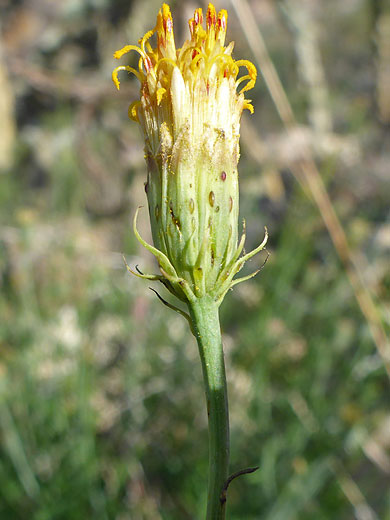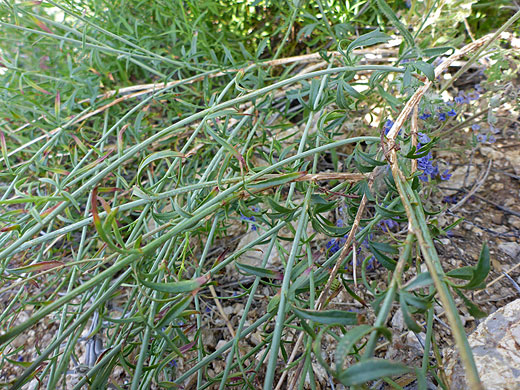Adenophyllum Porophylloides, San Felipe Dogweed
Plants > Wildflowers > Asteraceae > Adenophyllum Porophylloides

Adenophyllum porophylloides, along the Baker Mine Trail in Organ Pipe Cactus National Monument, Arizona
Common names:
San felipe dogweed, San Felipe dyssodia
Family:
Scientific name:
Adenophyllum porophylloides
Main flower color:
Range:
Southeast California, far south Nevada and most of Arizona
Height:
Up to 20 inches
Habitat:
Rocky hillsides and plains, in desert areas
Leaves:
Up to 1.5 inches long, pinnately divided into 3 to 5 lobes, pointed at the tip
Season:
March to December
Adenophyllum porophylloides inhabits the Mohave and Sonoran Deserts of California and Arizona, at elevations below 4,000 feet. Plants are shrubs, with numerous thin, branched, criss-crossing stems, woody towards the base, and bearing small, lobed leaves, which have several resin glands; at the base of the lobes and near the tip. Flowerheads are produced in spring and again in fall and winter, singly at the tips of the stems; they are subtended by a ring of narrow, pointed bractlets (the calyculus), which also have resin glands, as do the 12 to 20 lanceolate phyllaries surrounding the involucre. The glands impart an unpleasant odor to the plant.
The flowerheads contain between 25 and 40 disc florets, colored orange to yellow, and a ring of white pappus bristles, arranged in groups of 7 to 11. Small, reddish ray florets may also be present.
The flowerheads contain between 25 and 40 disc florets, colored orange to yellow, and a ring of white pappus bristles, arranged in groups of 7 to 11. Small, reddish ray florets may also be present.
All Contents © Copyright The American Southwest | Comments and Questions | Contribute | Site Map




